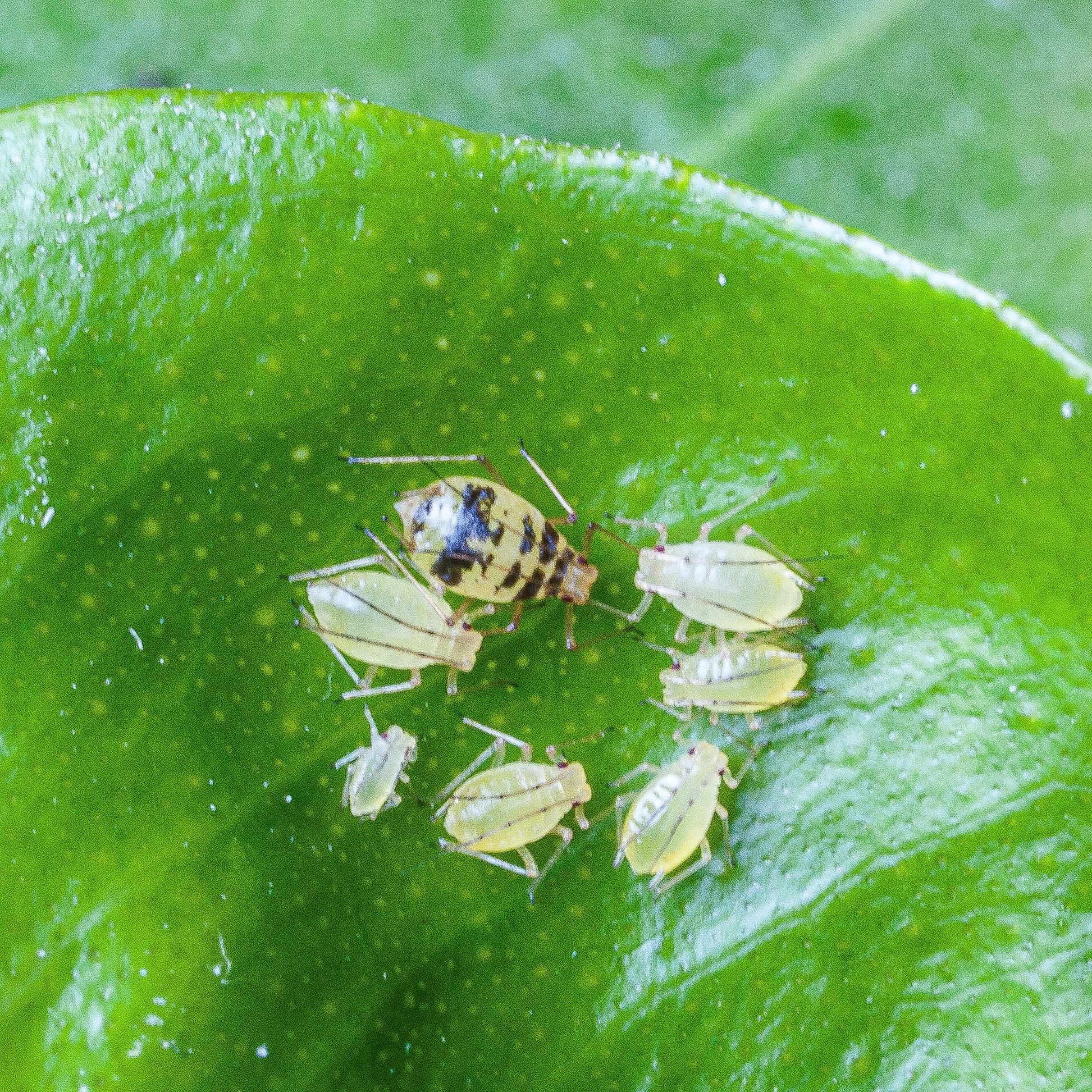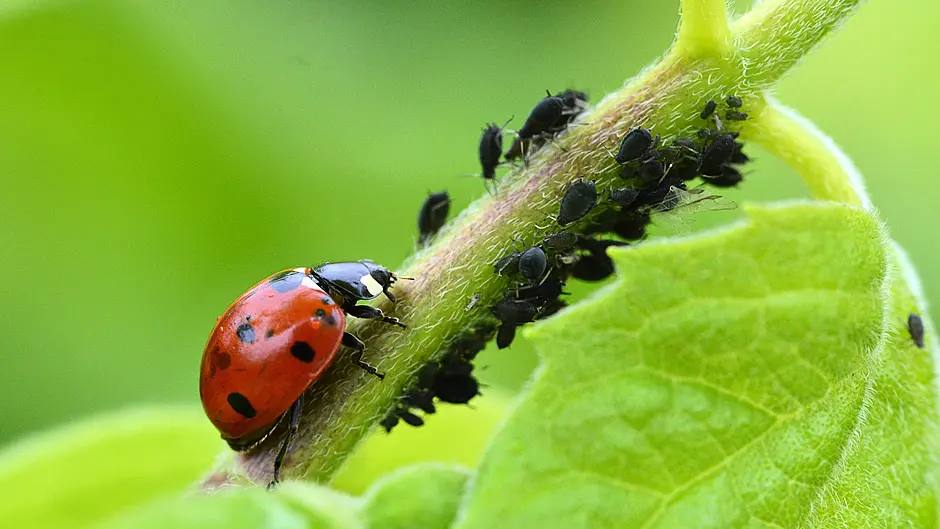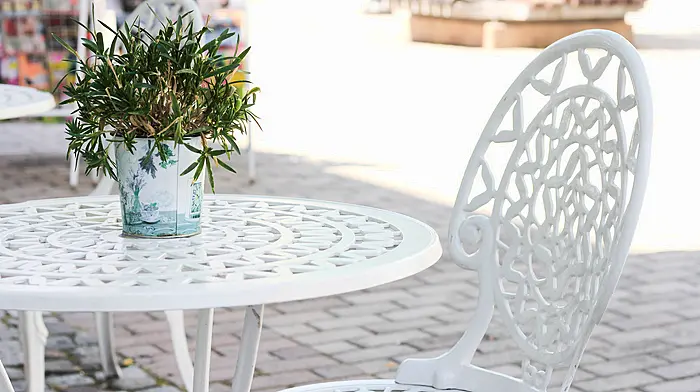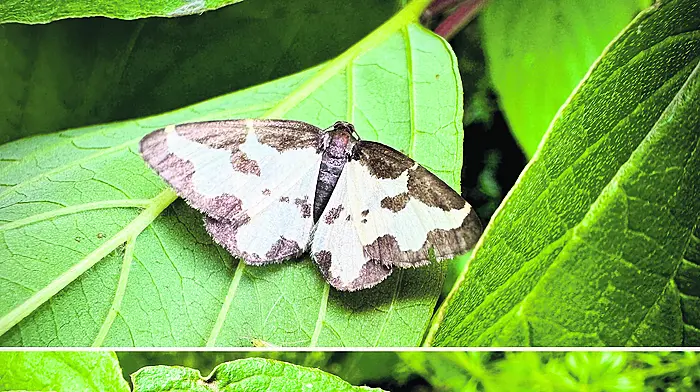There are many ways to protect your garden from attack by bugs, birds and more. JOYCE RUSSELL is an advocate for some of the more eco-friendly options
PESTS should never be the primary focus in a garden, but it is good to be aware of problems that may arise. Keep an eye on things and act quickly when needed before any problem gets out of hand. Most things can be controlled with a bit of planning and there are many aids and ideas out there to help your crops survive and thrive. Keep pests under control and you can enjoy your garden for all the beauty and bounty it provides.
Slugs and snails
Some new gardens escape serious attack in the fi rst year or two, but these pests soon thrive and multiply in a damp climate. Most seedlings need some protection – read seed packets for germination times and apply pellets two or three days earlier. Keep using until plants are big enough to survive. There are plenty of organic approved slug pellets available to buy. You can also use a biological control, containing a microscopic nematode, to spray on beds, or try repellent materials like copper tape or crushed eggshells. Encourage frogs in the garden to eat slugs, and a whole range of other pests, and if you are particularly keen, go out and remove slugs and snails by hand after dark.
Some different colour flies

Whitefly are repelled by the strong scent from French marigolds. Grow these in the greenhouse to protect tomato and strawberry plants. Greenfly can stunt and distort growth. Use a natural soap spray to remove and kill them, or blast them off more established plants with a spray of water from the garden hose. Blackfly gather at the tips of broad bean plants – cut the tops off and seal in a plastic bag before the bugs spread down the plant or onto other beans nearby.
Vegetable specific flies
Carrot flies lay their eggs on the surface of the soil in your carrot bed and the grubs can eat tunnels through the carrots. The best solution is to cover the bed with insect-proof fine mesh. Lift this temporarily to weed or thin on a damp day – the flies can sense carrot foliage from miles away and the damp reduces the scent. Cabbage root fl y will attack most brassicas. Cut 25cm squares of plastic or other impermeable material and thread the stem of susceptible plants through a hole in the middle before planting. This prevents the fl ies from laying eggs on soil near the stem.
Some wiggly ones
 New Zealand Flatworm.
New Zealand Flatworm.
Wireworm is a problem in grassland that has been turned into a new garden – pick them out when digging. The small orange/yellow creatures will invade potatoes and if you are prepared to sacrifice the first years’ crop, it’s a good way to clear lots of pests out of the soil. Caterpillars can be picked off plants or squashed if they are small. Wear rubber gloves or use tweezers if you prefer. You can buy organic sprays to kill these pests or simply cover the plants with fine crop-cover so eggs can’t be laid in the first place.
New Zealand flatworm is now present in many gardens. These pests eat earthworms which are important for soil health. Look under polythene covers, tiles, boards and paving and remove the beasts – don’t cut them in half or you will increase numbers. Boiling water will kill them outright. Birds Birds love all the fruits that you grow and there are ones to eat all stages from bud to blossom to sweet tasty orb. Use netting where you can. Raise it on poles with a jam jar on top so the net doesn’t tangle up with the bushes or plants.








